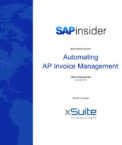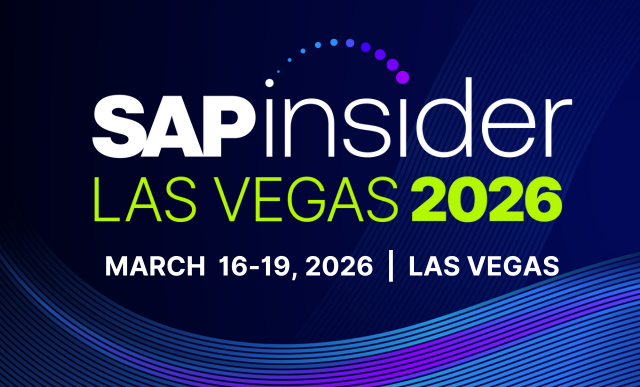SAP Fraud Management
Filter By
Browse By
- SAP Analytics and AI
- SAP Application Development and Integration
- All SAP Application Development and Integration
- SAP ABAP
- SAP ABAP Development Tools
- SAP ABAP Test Cockpit
- SAP API Management
- SAP BAPI
- SAP Basis
- SAP BRF
- SAP Business Application Studio
- SAP CMS
- SAP Design Studio
- SAP Development Tools
- SAP DevOps
- SAP EAI
- SAP EDI
- SAP Extension Suite
- SAP Fiori
- SAP Fiori Elements
- SAP Integration Suite
- SAP Low Code Application Development
- SAP Low Code Automation
- SAP Netweaver
- SAP Release Management
- SAP UI5
- SAP Web Application Server
- SAP Web IDE
- SAP Business Process Management
- SAP Center of Excellence
- SAP CIO
- SAP Customer Experience
- SAP Data and Data Management
- All SAP Data and Data Management
- SAP BW
- SAP BW/4HANA
- SAP Crystal Reports
- SAP Data Archiving
- SAP Data Center
- SAP Data Governance
- SAP Data Integration
- SAP Data Migration
- SAP Data Quality
- SAP Data Services
- SAP Data Strategy
- SAP Data Visualization
- SAP Data Warehouse Cloud
- SAP DMS
- SAP Document Control
- SAP EIM
- SAP ETL
- SAP ETL Tools
- SAP HANA
- SAP HANA Administration
- SAP HANA Deployment Infrastructure
- SAP HANA Studio
- SAP Master Data
- SAP Master Data Governance
- SAP MDM
- SAP Enterprise Architect
- SAP Enterprise Asset Management
- SAP ERP
- SAP Finance
- All SAP Finance
- SAP Accounting
- SAP AR AP
- SAP Asset Accounting
- SAP Billing Systems
- SAP BPC
- SAP BRIM
- SAP Cash Management
- SAP Central Finance
- SAP Controlling
- SAP COPA
- SAP Cost Center Accounting
- SAP Currency Risk
- SAP e-invoicing
- SAP FICO
- SAP Finance Automation
- SAP Advanced Financial Closing
- SAP Financial Consolidation
- SAP Financial Planning
- SAP FX Risk
- SAP General Ledger
- SAP Global Tax Management
- SAP Hyperion
- SAP Order to Cash
- SAP Payment Processing
- SAP Profitability Analysis
- SAP Rebate Management
- SAP S/4HANA Finance
- SAP SWIFT Compliance
- SAP Treasury Management
- SAP Universal Journal
- SAP Governance Risk and Compliance
- SAP Human Capital Management
- SAP Intelligent Technologies
- SAP Platform and Technology
- All SAP Platform and Technology
- SAP Business Technology Platform
- SAP Cloud
- SAP Cloud Connector
- SAP Cloud Integration Platform
- SAP Cloud Migration
- SAP Cloud Platform
- SAP Cloud Providers
- SAP Cloud Strategy
- SAP Digital Signature
- SAP Container Platform
- SAP HANA Enterprise Cloud
- SAP Digital Asset Management
- SAP Smart Forms
- SAP HEC
- SAP Digital Integration Hub
- SAP Hyperscalers
- SAP Infrastructure
- SAP Messaging
- SAP Quality and Testing
- SAP Security
- SAP Spend Management
- SAP Supply Chain Management
- All SAP Supply Chain Management
- SAP APO
- SAP Asset Management
- SAP Business Network
- SAP Digital Manufacturing Cloud
- SAP Digital Twin
- SAP EWM
- SAP IBP
- SAP Inventory Management
- SAP Label Printing
- SAP Logistics
- SAP Manufacturing
- SAP Manufacturing Automation
- SAP MES
- SAP MII
- SAP MM
- SAP MRO
- SAP MRP
- SAP Order Management
- SAP Plant Maintenance
- SAP PLM
- SAP Production Planning
- SAP S&OP
- SAP SD
- SAP SPM
- SAP Supply Chain Planning
- SAP Track and Trace
- SAP Transportation Management
- SAP System Administration
What Is SAP Fraud Management?
Fraud can be devastating to a business, leading to financial and legal consequences. Fraud management seeks to identify potential areas for fraud across business processes both internally and externally with partners. SAP Fraud Management looks at potential for fraud related to SAP customers. The SAP tool related to fraud management is called SAP Business Integrity Screening.
What Is SAP Fraud Management?
Fraud can be devastating to a business, leading to financial and legal consequences. Fraud management seeks to identify potential areas for fraud across business processes both internally and externally with partners. SAP Fraud Management looks at potential for fraud related to SAP customers. The SAP tool related to fraud management is called SAP Business Integrity Screening.
Governance, Risk, and Compliance (GRC) teams are often tasked with managing fraud, and they deploy many standard GRC strategies to deal with fraud risk. For example, they may put fraud controls into place as well as collect process and transactional data for fraud analysis. Fraud management often integrates into other areas of GRC, such as the broader Risk Management.
Tools for fraud management look to centralize fraud risk data and automate fraud screening and analysis. Fraud management tools may have the following capabilities, among others:
- Exception detection and compliance checks
- Detection strategy calibration
- Exception-based scenario analysis
- Business partner screening
- Automated workflows and notification
- Continuous Controls Monitoring (CCM)
- Integrity screening.
Many risk detection and management tools also feature fraud capabilities. For example, Appsian Security’s threat detection and response solutions seek to identify fraud potential from transactional data. Similarly, Fastpath offers tools for risk quantification and transactional controls that can help manage fraud risks. A company like RSM can help organizations establish fraud management programs, including best practices for fraud prevention and detection.
Key Considerations for SAP Fraud Management
- GRC and fraud management teams are stretched — in our most recent research into the state of the GRC market, we found they have more responsibility but aren’t growing along with that responsibility. The leading companies in our GRC research are utilizing automation to optimize their GRC resources. For fraud management, this could mean automating controls and detection.
- Fraud risk analysis can also be done at the user access level. For example, Lundbeck implemented a Security Weaver tool for segregation of duties analysis to identify the potential for users to commit fraud. Consider how you can integrate fraud management across GRC and security functions.
- Centralize your fraud risk data. You are monitoring areas throughout the business for fraud risk. To best manage that fraud risk, you need a single view of where fraud potential exists and which risk holds the most potential harm for the company. This can help your organization prioritize which threats need to be addressed most imminently.
301 results
-

Getting Ready for the SEC’s Proposed Rules on Cybersecurity
Reading time: 8 mins
Learn how to accommodate the potential new rules proposed by the SEC in March of 2020. The National Institute of Standards and Technology (NIST) had released its publication on Integrating Cybersecurity and Enterprise Risk Management (ERM). The intent highlighted there was to help organizations better “identify, assess, and manage their cybersecurity risks in the context…
-

- SAP CyberSecurity
 Premium
Premium
Today’s Security Challenges for Industries
Reading time: 5 mins
There is now more than one megabyte of data per second being created for every person on earth. If harnessed properly, that creates a wide array of exciting opportunities for businesses. However, there are also significant security challenges associated with such large amounts of data floating around. Across all industries and disciplines, organizations must now…
-

Automating AP Invoice Management – Benchmark Research Report
Reading time: 2 mins
Reducing operational costs and increasing productivity requires strategies for automating accounts payable (AP) invoice management, as manual or partially automated processes no longer provide efficiency. An expanding digital economy and increased competition require organizations to have efficient processes to support and maintain supplier relationships and keep pace with industry peers. With a hybrid workforce and…
-
-

Automating AP Invoice Management Research Webinar On-Demand
February 16, 2023
This report explores the need for SAPinsider organizations to consider automating AP processes to save time, reduce operational costs associated with manual labor, and minimize human errors that result from repetitive or complex tasks. Our findings show that most survey respondents (76%) do not digitize incoming paper invoices, while eight in ten (80%) survey respondents…
-

- SAP Data Security
 Premium
Premium
How to Protect Data at Rest
Reading time: 5 mins
Companies often prioritize data they are actively using within their cybersecurity planning and infrastructure. However, it is important that they do not overlook data at rest. Examples of data at rest include archives, online backups, client copies for quality assurance and development environments, and disaster recovery sites. Though it may not be top of mind,…
-

Automating AP Invoice Management North America Derivative
Reading time: 1 mins
In the full benchmark report, most SAP organizations identified insufficient automation leading to manual work and manual processes as the primary factor affecting their strategic approaches to automating AP processes. Similarly, this strategic priority aligned with nearly a third (32%) of survey respondents from North American-based organizations as the top driver of AP process automation,…
-

How EMEA Organizations Are Leveraging Automation to Improve AP Invoice Management Processes
Reading time: 1 mins
Survey respondents operating in EMEA facing challenges with manual work and manual processes across AP invoice management are prioritizing a move to SAP S/4HANA as an opportunity to transform AP functions at their organizations. This represents the leading driver for EMEA respondents regarding their approach to automating AP invoice management.
-
-

- SAP Finance
 Premium
Premium
Sasol Chose bioLock to Protect their SAP Financials
Reading time: 1 mins
Sasol, a South African chemical, and energy company updated its SAP payment processes with bioLock, a software solution that secures access via biometric authentication. This process was implemented at Sasol by Linx/AS Africa. With bioLock, product benefits include the ability to be configured in a way that protects fields and functions in the SAP system,…
-

- SAP Process Control
 Premium
Premium
Enterprise Governance, Risk, and Compliance Supported by SAP GRC Solutions
Reading time: 6 mins
While Enterprise Risk and Compliance provides a centralized and coordinated framework for an organization’s strategy on how to manage governance, risk, and regulatory compliance, the SAP GRC solutions support both the strategic as well as tactical and operational approach on the “how to”. It is important to understand what it takes from an organizational as…
-

- SAP GRC
 Premium
Premium
How to Revolutionize and Harmonize Your Internal Controls and SOD Access with Pathlock AVM
Click Here to View the Session Deck Segregation of duties is designed to minimize the risk of fraud and errors and protect company assets such as data or inventories. This is done through the appropriate assignment of access rights by distributing responsibility for business processes and procedures amongst several users. View this session deck to:...…
Become a Member
Unlimited access to thousands of resources for SAP-specific expertise that can only be found here.
Become a Partner
Access exclusive SAP insights, expert marketing strategies, and high-value services including research reports, webinars, and buyers' guides, all designed to boost your campaign ROI by up to 50% within the SAP ecosystem.
Upcoming Events
Related Vendors
Your request has been successfully sent


